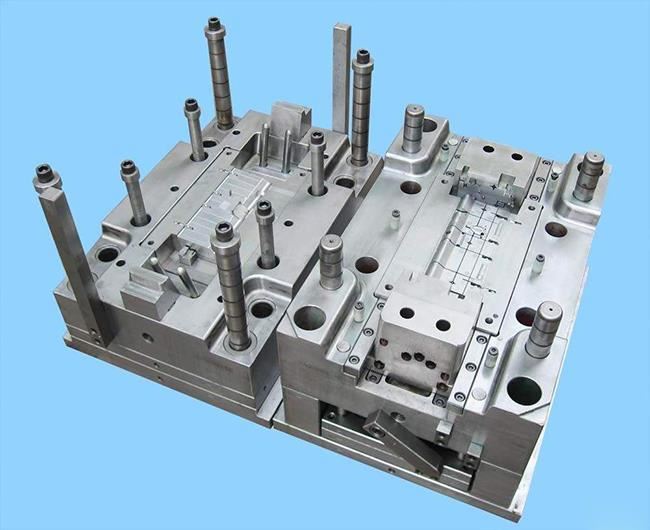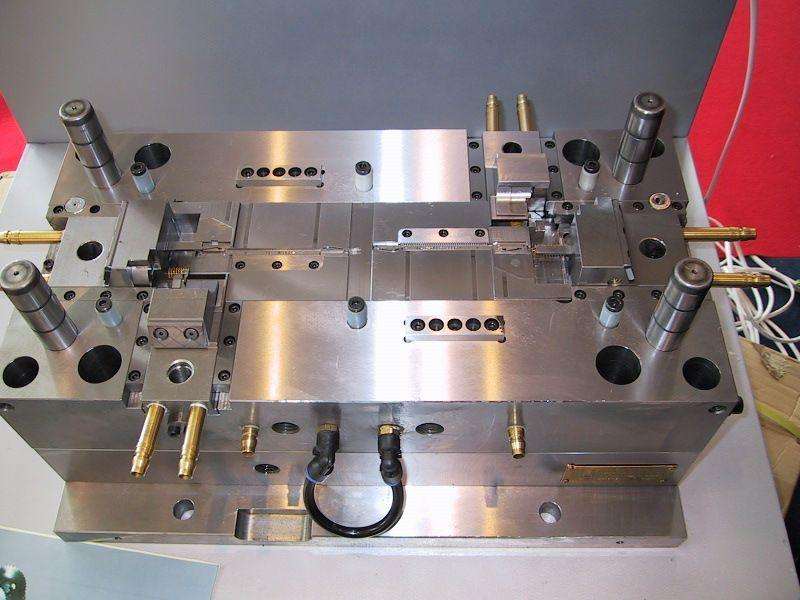The materials used in the manufacture of stamping dies include steel, steel cemented carbide, carbide, zinc based alloys, polymer materials, aluminium bronze, high and low melting point alloys and so on. Most of the materials used in the manufacture of stamping dies are mainly steel. The common types of materials used for the working parts of dies are: carbon tool steel, low alloy tool steel, high carbon high or medium chromium tool steel, medium carbon alloy steel, high speed steel, matrix steel and carbide, steel cemented carbide, etc.

1. Low-alloy tool steel
Low-alloy tool steel is based on carbon tool steel with the addition of the right amount of alloying elements. Compared with carbon tool steel, reduce the tendency of cracking and quenching deformation, improve the hardenability of steel, wear resistance is also better. Low-alloy steel used in the manufacture of moulds are CrWMn, 9Mn2V, 7CrSiMnMoV (code CH-1), 6CrNiSiMnMoV (code GD) and so on.
More applications in the mold of carbon tool steel for T8A, T10A, etc., the advantages of good processing performance, cheap. But the hardenability and red hardness is poor, heat treatment deformation, low load-bearing capacity.
3. High-speed steel
High-speed steel has the highest hardness, wear resistance and compressive strength of the mold steel, high load-bearing capacity. Commonly used in moulds are W18Cr4V (code 8-4-1) and less tungsten W6Mo5Cr4V2 (code 6-5-4-2, the United States brand M2) and to improve the toughness of the development of reduced carbon vanadium high-speed steel 6W6Mo5Cr4V (code 6W6 or low carbon M2). High speed steels also require re-forging to improve their carbide distribution.
4. High-carbon medium-chromium tool steels
High-carbon medium-chromium tool steels used for moulds are Cr4W2MoV, Cr6WV, Cr5MoV, etc., their chromium content is low, less eutectic carbide, carbide distribution, heat treatment deformation is small, with good hardenability and dimensional stability. Compared with the carbide segregation is relatively serious high-carbon high chromium steel, the performance has improved.

5. High-carbon high-chromium tool steel
Commonly used high-carbon high-chromium tool steel Cr12 and Cr12MoV, Cr12Mo1V1 (code D2), they have good hardenability, hardenability and wear resistance, heat treatment deformation is very small, for high wear resistance micro-deformation mold steel, bearing capacity second only to high-speed steel. But carbide segregation is serious, must be repeatedly upsetting (axial upsetting, radial drawing) to change forging, in order to reduce the unevenness of carbide, improve the use of performance.
6. Cemented carbide and steel cemented carbide
The hardness and wear resistance of cemented carbide is higher than that of any other kind of mould steel, but the bending strength and toughness are poor. The cemented carbide used for moulds is tungsten and cobalt, and for moulds with small impact and high wear resistance requirements, a lower cobalt content cemented carbide can be used. For high impact moulds, carbide with higher cobalt content can be used.
Post time: Apr-19-2021
